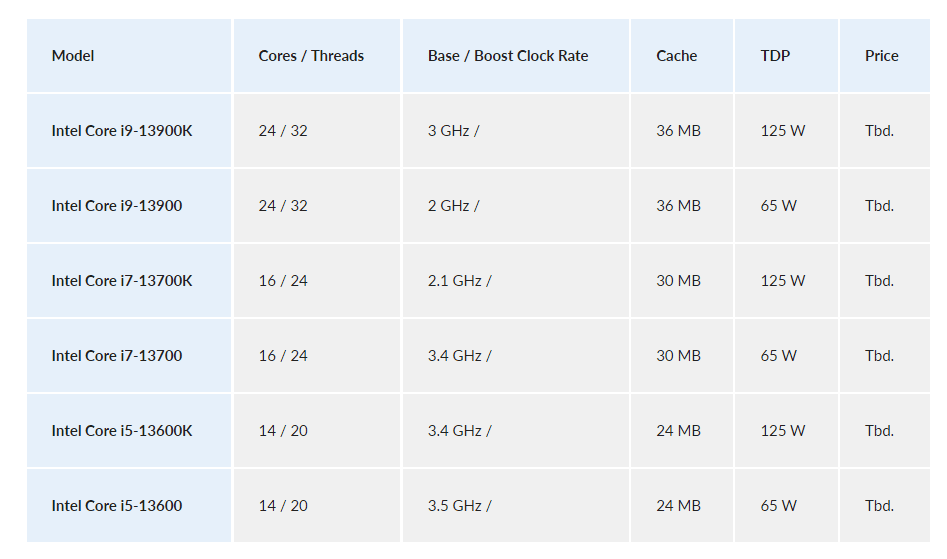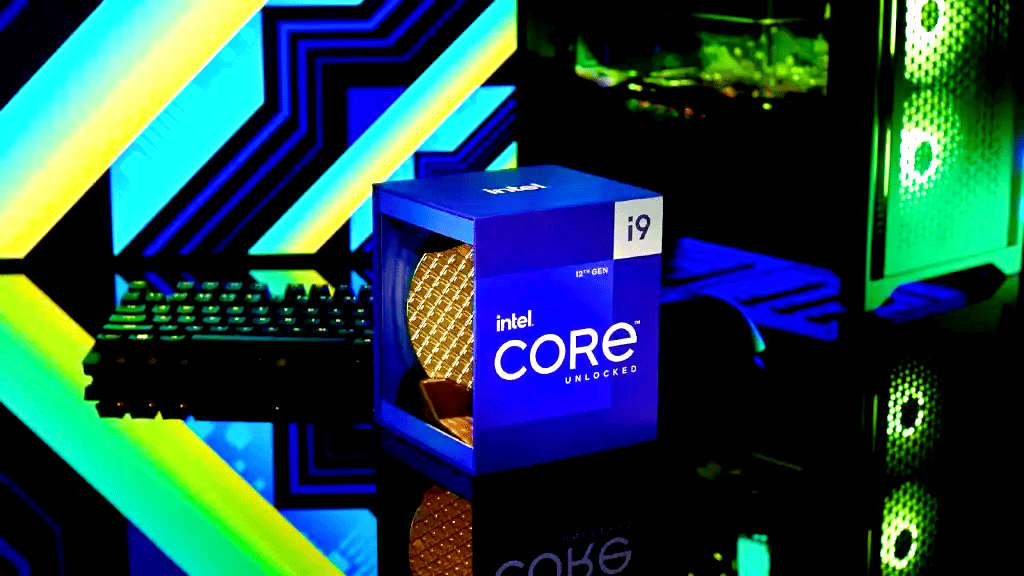Intel”s new Raptor-Lake CPUs are not far off. Find out what we expect in terms of price, performance and models in our overview.
More cores, more performance, more clock speed: What the new Intel CPUs can do
Intel”s new Raptor-Lake CPUs are just around the corner. Find out what we expect in terms of price, performance and models in our overview.
AMD has taken the first step, Intel will follow soon: The semiconductor giant wants to present its new processor generation in a few days. While AMD has a new architecture on the mat, Intel is improving mainly in detail. Raptor Lake, as Intel calls its 13th generation internally, is more of a refresh of its predecessor Alder Lake.
But of course that is no reason to simply ignore Raptor Lake. Due to the almost joint launch of the new CPUs, Intel and AMD will go head-to-head for the favour of the hardware community. And so far it looks like the race could well be close.
Release: When will the Raptor Lake CPUs be released?
The Intel Raptor Lake is expected to be released on 20 October 2022, at least according to the usually very well-informed Chinese leaker Enthusiastic Citizen. And the statement also coincides with the information provided by Intel itself. According to this, the new CPUs will be released in autumn 2022.
Intel wants to present its new processor generation a few weeks earlier. In all likelihood, the i9-13900K and Co. will be presented for the first time at a keynote at the Intel InnovatiON. The presentation will take place on the same day that the direct competitor, AMD”s Ryzen 7000, will be available on shop shelves.
At least the Core i9-13900K should be available for pre-order immediately. All other models will have to do without the privilege. Pre-orders are not expected until around two weeks later.
All notebook users will have to be patient longer. It will probably be several months before Intel delivers counterparts to the desktop CPUs. It is expected that the mobile models will not be shown until the tech trade fair CES in January 2023.
Models and prices at Raptor Lake
At the start, Intel seems to have planned twelve different models for end customers. Accordingly, Intel will start with the Core i5-13600, Core i7-13700 and Core i9-13900 models as well as their overclockable sister models Core i5-13600K, Core i7-13700K and Core i9-13900K.
Each of the models will also be available with the F suffix (for example Core i9-13900KF). This indicates that the models do not have an iGPU, i.e. an integrated graphics unit, and are therefore slightly cheaper.
With this, Intel is taking a different path than many analysts expected in advance. The general expectation beforehand was that Intel would limit itself to only the boosted K versions at launch.
As for the expected prices, the information is still quite thin at the moment. Nikkei Asia expects an increase of up to 20 per cent compared to the previous models. However, since competitor AMD is not planning any price increases and some models will even be cheaper, this estimate could already be outdated.

More power? Sure, but how much?
Much of what we already know from Alder Lake is adopted by Raptor Lake. For example, the Intel 7nm process of the predecessor is used again in production. The support of DDR4 and DDR5 RAM is also adopted, just like the newly introduced hybrid solution with powerful P and energy-efficient E cores.
On the one hand, Intel has optimised the P cores, which are an extension of the predecessor cores. On the other hand, nothing has been changed in the structure of the E cores, but their number has been increased. For example, the flagship Core i9-13900K comes with 16 E-cores, while the Core i9-12900K only had 8 E-cores.
The enlargement of the cache is likely to be relevant for gamers. As the leaker OneRaichu informs us, the Core i9 expands the L3 cache from 30 to 36 MB and the L2 cache from 14 to 32 MB.
Now, it appears.
About p core L2 cache latency,non-accuracy test result shown in pic2. https://t.co/Gf8o2V04Pa pic.twitter.com/mLarcP9lhl– Raichu (@OneRaichu) May 18, 2022
In addition, the amount of transmitted instructions will be increased with the new CPU generation. On the one hand, according to Intel itself, the IPC (instructions per cycle) will increase in the double-digit range. On the other hand, the clock rate itself is also supposed to increase. Several sources speak of up to 5.8 GHz for the Core i9-13900K.
What does the performance increase actually bring to gaming? Above all, gamers could really feel an increase in FPS from the larger cache. Innovations such as the higher number of E-cores, on the other hand, are probably more noticeable in the productivity area.
As is so often the case, a new Intel CPU is most likely worthwhile when the resolution is rather low. Experience shows that you can benefit from an upgrade especially in Full HD, while the effects in QHD and UHD are usually much smaller. The leaker Harukaze5719 speaks of around 4.5 percent more FPS when you play in Full HD and upgrade from a Core i9-12900KS.
i9 12900K vs i9 13900K gaming comparison. (relative)
*NOTE : some high perf is due to radical perf improve in some games https://t.co/IC9tvXupeo pic.twitter.com/B8GEW9TVIr
– 포시포시 (@harukaze5719) July 17, 2022
What else is new at Raptor Lake?
The first big innovation is something that, for once, doesn”t change. While Intel usually likes to introduce a new socket generation with a new CPU, forcing you to buy a new motherboard, this is not the case with Raptor Lake. Although new chipsets are introduced with the 700 series, the 1700 socket is to remain.
This means that your existing mainboards from the 600 series, such as Z690 or B660, should continue to be compatible.
In addition, there will be an AI computing accelerator for Raptor Lake, which should be connected via an M.2 slot. However, the information on this is still very scanty at the moment.
Intel also does not go into detail about the overclocking functions of Raptor Lake, but they should at least be broader than those of the predecessor.
There have also been changes in the energy efficiency of Raptor Lake. According to Underfox3, the DLVR should ensure lower power consumption with the same performance. This is a new voltage regulator that is placed next to the primary regulator.
However, anyone hoping for particularly economical processors will be disappointed. As with the predecessor, the expected TDP is 125 watts for the K models and 65 watts for the non-K models (PL1). In the short term, the K models should also be able to draw on up to 228 watts.
Does Raptor Lake knock your socks off? Or do the new Intel CPUs leave you cold? And which manufacturer do you think is currently ahead in the processor duel? Feel free to write us in the comments


